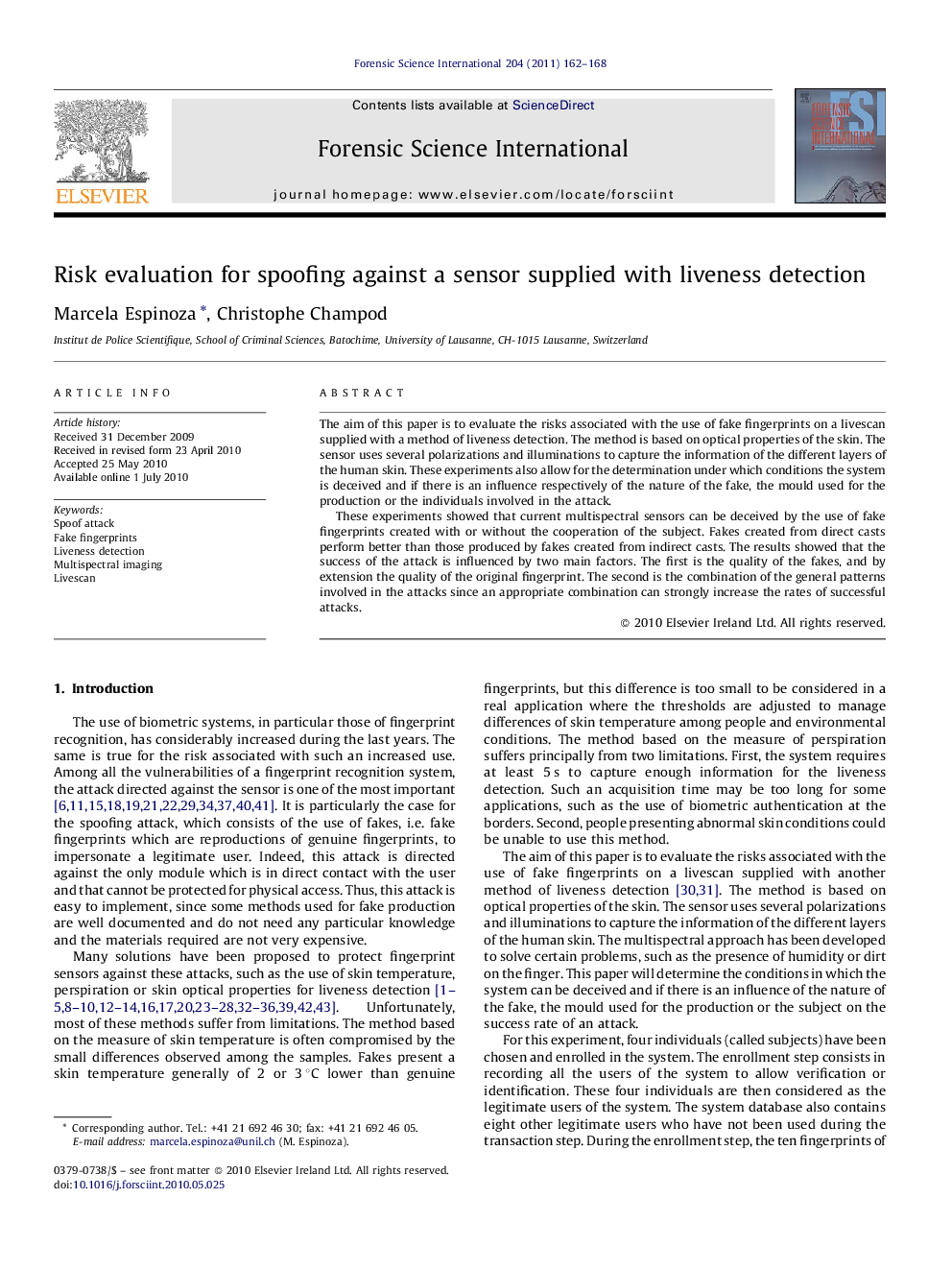| Article ID | Journal | Published Year | Pages | File Type |
|---|---|---|---|---|
| 96977 | Forensic Science International | 2011 | 7 Pages |
The aim of this paper is to evaluate the risks associated with the use of fake fingerprints on a livescan supplied with a method of liveness detection. The method is based on optical properties of the skin. The sensor uses several polarizations and illuminations to capture the information of the different layers of the human skin. These experiments also allow for the determination under which conditions the system is deceived and if there is an influence respectively of the nature of the fake, the mould used for the production or the individuals involved in the attack.These experiments showed that current multispectral sensors can be deceived by the use of fake fingerprints created with or without the cooperation of the subject. Fakes created from direct casts perform better than those produced by fakes created from indirect casts. The results showed that the success of the attack is influenced by two main factors. The first is the quality of the fakes, and by extension the quality of the original fingerprint. The second is the combination of the general patterns involved in the attacks since an appropriate combination can strongly increase the rates of successful attacks.
